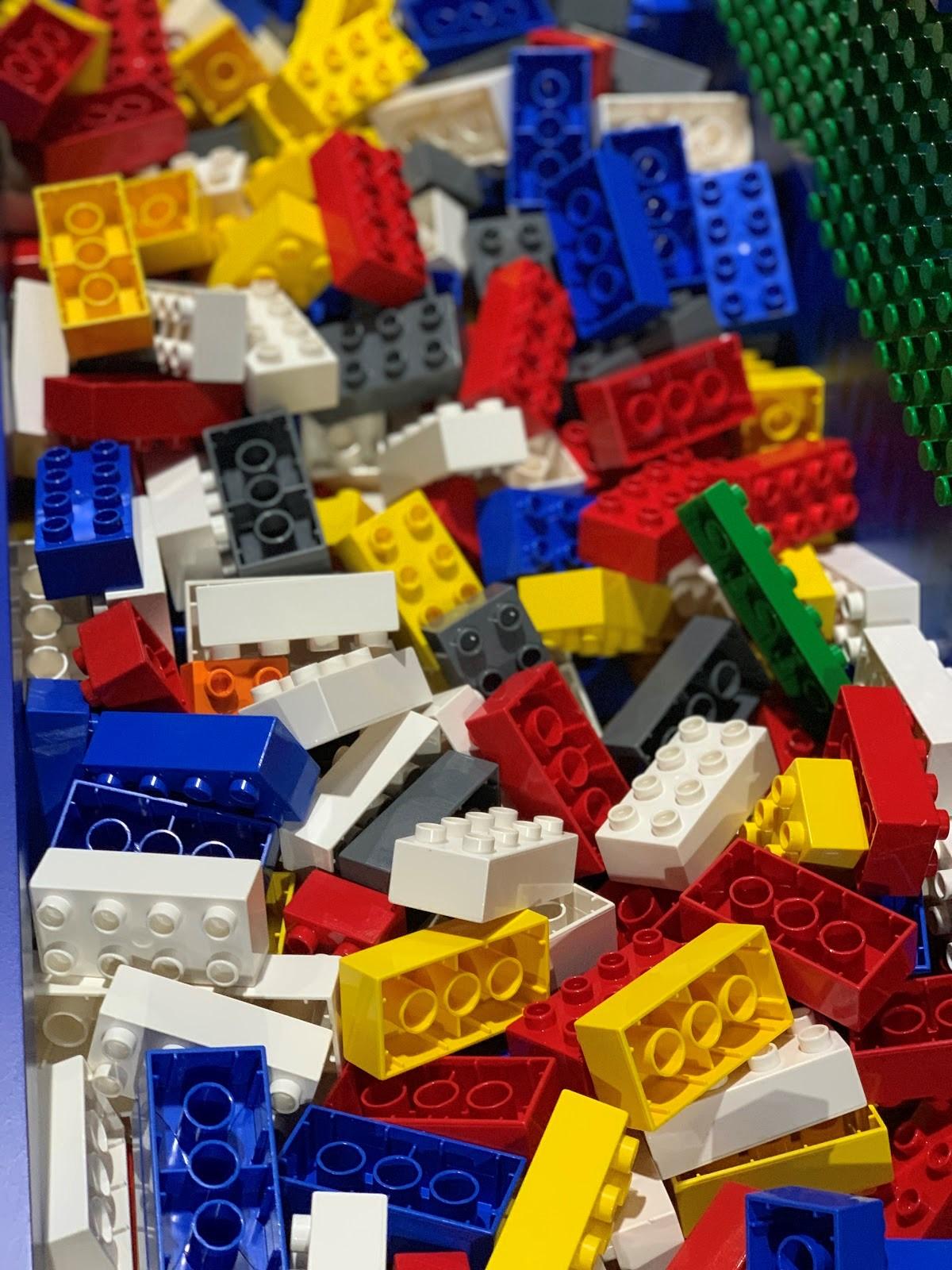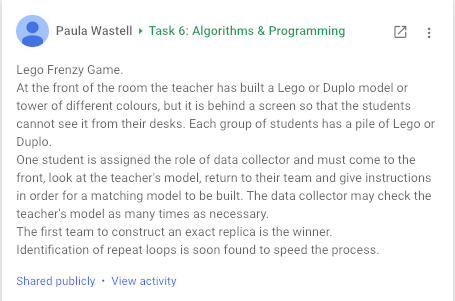LEGOⓇ Data Scuttle

What’s not to love about LEGOⓇ bricks, other than their sharp corners that stab into the bottom of your bare foot when stepped on?
In this article CSER's Toni Falusi explains how this everyday household item can be used in introductory explorations of data movement in networks.
Using LEGOⓇ bricks to teach Digital Technology concepts is a favourite of mine and one activity in particular has met with positive reactions from teachers across primary and secondary year levels. We have adapted it from an idea shared in our MOOC Community by Paula Wastell.
Begin with participants in groups of three or more with a bag of identical LEGOⓇ bricks between them. Place a pre-built LEGOⓇ model (constructed from the same selection of bricks) into a container, hidden from view.
Group members should decide on their roles, one becoming the builder and all additional members identified as data collectors. The builder is the only one allowed to touch the bricks and must not speak or ask clarifying questions. The first data collector leaves the group and views the model in the container. They decide on one brick to identify the colour, shape and position and transfer that data back to the builder. On receipt of that information, the second data collector repeats the process, choosing the details of another LEGOⓇ brick to transfer back to the builder. This process repeats until the group’s model is a replica of the sample build.
This activity can take 20 plus minutes to complete, depending on the skills of the builder, the ability to transfer data successfully and difficulty of the original sample model.
At the conclusion of the activity participants reflect on the most challenging aspect of the task and identify what could have made the process easier? The most common responses to these questions, in the teacher workshops, have been around the difficulty to remember the data during the transfer process, lack of common vocabulary making communication about brick details difficult, the congestion at the sample model and perspective or angle of the model in comparison to their group’s build.
This activity is an engaging introduction into exploring data movement in networks and can be adapted to integrate a literacy component by requiring the collectors to create an algorithm by writing the information onto strips of paper, and placing them in order for the builder. If you would like to explore how to integrate the Australian Curriculum: Digital Technologies into other learning areas, particularly English and Mathematics, the CSER F-6 Digital Technologies: Extended MOOC is a great place to start.

